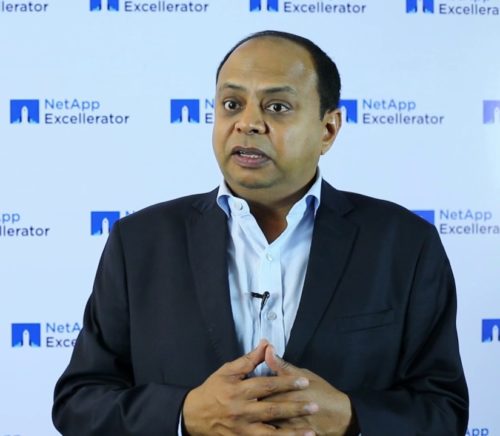With the rise of connected devices, the amount of data generated is growing manifold. While technologies like Big Data, machine learning, and artificial intelligence (AI) help derive meaningful insights, its management remains a challenge. To understand how data from various sources can be managed better, Ankita KS from EFY had an interaction with senior vice president & managing director of NetApp India, Mr. Deepak Visweswaraiah.
Q. According to you, what are the major challenges with connected devices?

A. The major challenge today is the sheer amount of data that is being generated and its management. Even technologies like Big Data and Hadoop are failing to process huge amounts of data. Secondly, it takes a lot of bandwidth and connectivity to process and move data from one location to another – making the whole process an expensive affair. So, an ideal way of dealing with this challenge would be to take the computing solutions to wherever the data resides, which again poses another set of challenges from a solution provider’s perspective.
Q. How different is the storage market in India compared to the global market?
A. The Indian storage market is growing constantly even though it does not have a legacy like other countries. This facilitates faster adoption of technologies and leapfrogging to different environments. The size of the Indian market is a bit smaller when compared to China or Australia, but we see quicker adoption of technologies here. There is also a talent problem in India, but it is improving with the initiatives that the government has come up with. With the advent of smart devices and wireless technology, we can reach the remote corners of the country where there was no connectivity earlier, to deliver solutions especially in healthcare, education and other sectors.
Q. What exactly is Digital Transformation? How is NetApp helping in this transformation?
A. Digital Transformation has various definitions. From a Government’s point of view, it could be about moving all the records from papers to storable and secured digital format for various use cases and retrievals. From an organisation’s point of view, it could be about changing the way they make decisions with the help of data. We do provide solutions and services to help all segments. For example, each of our installed device, sends data back to us regarding its health, performance, processing etc. We monitor the data parameters on a real-time basis and automatically provide replacement if we see any anomalies in the functioning of the device. Thus, customers do not have to worry about the product or its functioning.
Q. Could you brief us about NetApp’s private storage?
A. NetApp’s private storage offering is a unique one. If a customer doesn’t want to put their data on the cloud but requires the elasticity and benefits of it, they can use the NetApp infrastructure. It not only stores the data close to the cloud but also the customer will own the data and infrastructure with complete control. Additionally, this infrastructure can be connected to Azure or AWS to further enhance flexibility.
Q. I also read that NetApp has partnered with Ducati to help the latter boost performance of the bikes, how exactly does this happen?
A. As a rider races or practices, our servers collect real-time data pertaining to the overall performance of the bike, including the number of turns made and the pattern of ride. We provide them with the capability to store and manage this data from an infrastructure point of view. Our flash technology facilitates faster access of data thereby enabling proper and timely analysis to boost the overall performance of the bike.
Q. How do you ensure that your solutions and products are secure?
A. Today success is all about agility, that is, the ability to quickly develop, test and produce, but security is something that many miss out to consider. When we build products at NetApp, we consider security from the bottom-level. Because at the end of the day, data resides on our devices and we must make sure that the products are secure. It’s a part of our development life cycle to test the security, make sure that all the public vulnerabilities are taken into consideration and discrepancies, if any, are resolved immediately.
Q. What is your advice to developers and engineers who are building new products?
A. Firstly, one needs to understand that it is all about identifying and building the right solutions for your customers. If you are trying to solve a problem, do that very well and make sure it meets all the requirements. The second thing is to do few things very well. It’s not about doing ten things imperfectly, but doing two things perfectly, that counts. Thirdly, unlearn and learn – the technologies change at an incredibly fast pace, so keeping up and learning what is new and how to implement it for various use cases, is critical.
Q. How would you define your leadership style?
A. My leadership style is all about accountability. I believe in getting the job done irrespective of the number of hours one spends in the office. It’s not about dictating and making people work, but about motivating them to do their job.
Q. Overall, what is the road ahead for NetApp?
A. We are working towards being the data authority in the hybrid cloud. We want to be known as the experts in data. Secondly, we want to help our customers change the world with data. In India, we also have our only start-up accelerator, the NetApp Excellerator, where we house and mentor data-driven start-ups to create innovative solutions that are market-ready. We are planning to expand that as well.







